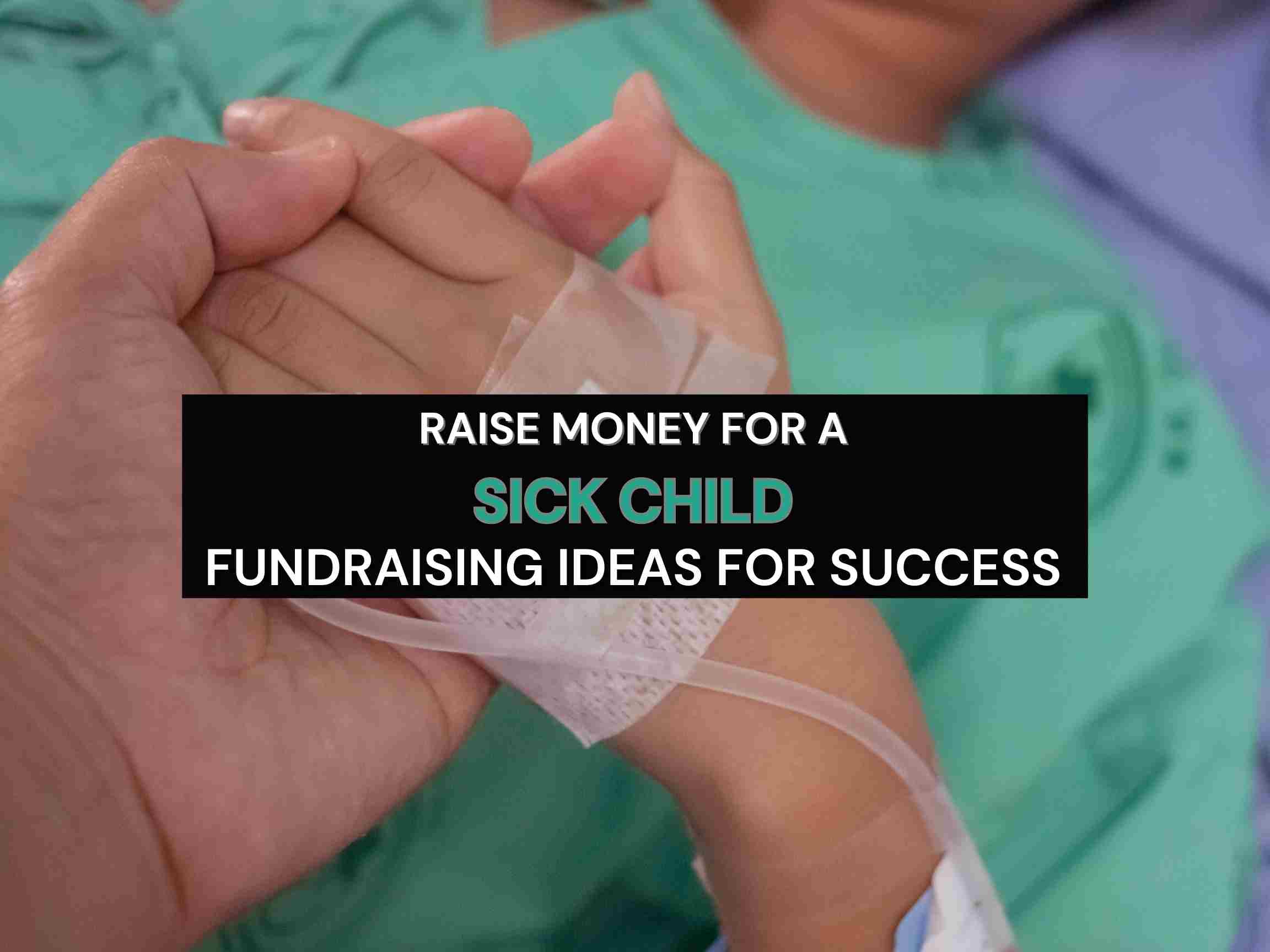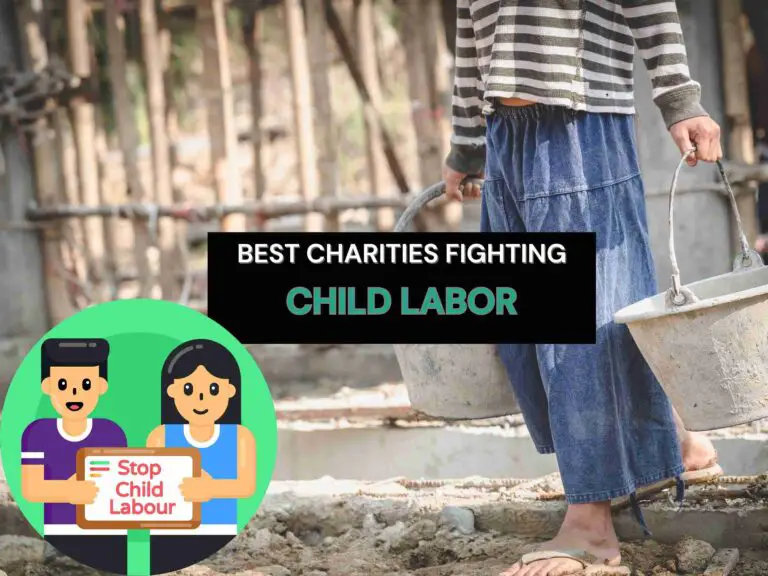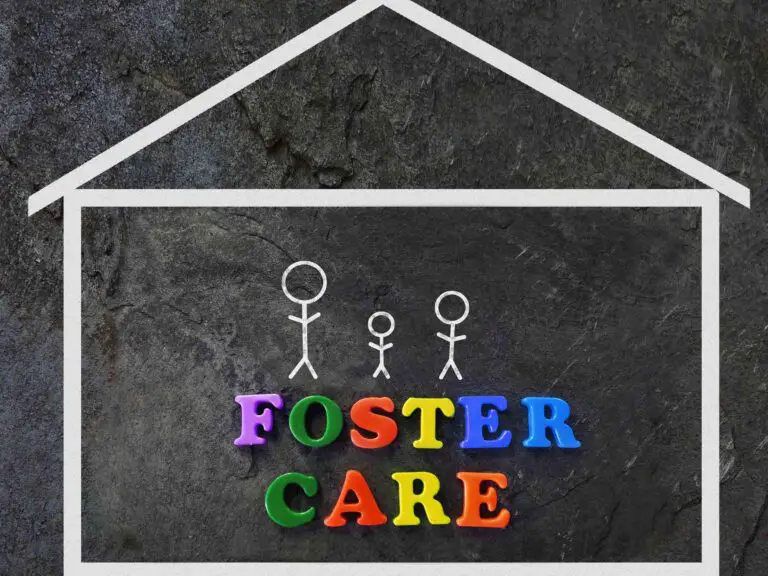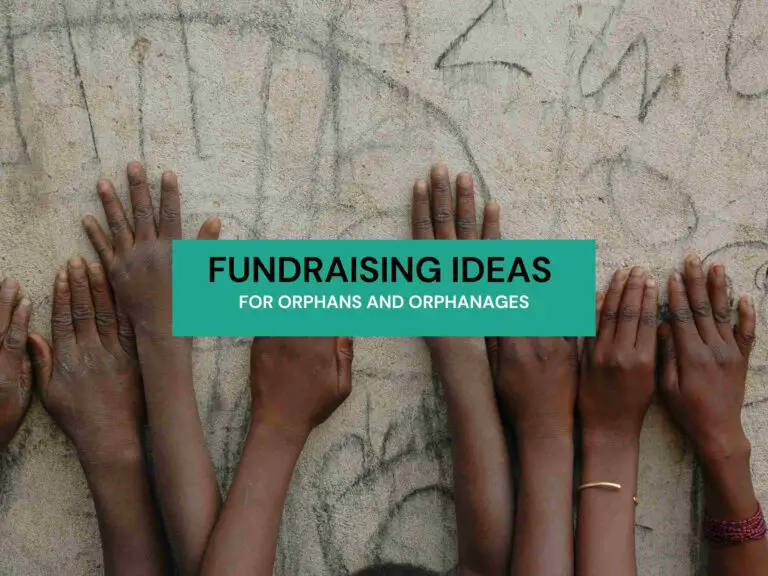11 Definitive Fundraising Ideas For Sick Child: Quick+Easy
This post may contain affiliate links. If you purchase through one of these links, I may receive a small commission at no extra cost to you. As an Amazon Associate, I earn from qualifying purchases.

When a child falls seriously ill, the heartache and stress that a family endures can be overwhelming. This situation is only made worse by the financial burden of mounting medical bills, ongoing care, and other related expenses. As such, the search for viable and effective fundraising ideas for sick child can feel like an uphill battle, especially when you’re juggling the weight of numerous other responsibilities. You may be left wondering – “How do we get started? What are the most effective strategies? How can we reach the most people?”
To help navigate these complexities, we’ve compiled a comprehensive guide filled with proven fundraising ideas for a sick child. This guide provides insights into crowdfunding options, community-based initiatives, social media drives, and more, all tailored toward the specific needs of those seeking to raise funds for a sick child’s expenses.
By integrating a mixture of digital and traditional fundraising methods, this guide will provide you with a roadmap to significantly increase the resources available for your child’s care. It also provides valuable insights into the legal aspects of raising funds for a sick child so that you can proceed with confidence.
Are You Allowed to Raise Funds for a Sick Child?
Before we delve into the different strategies you can employ to raise funds, it is important to address a crucial question: Is it legal to raise funds for a sick child? The short answer is yes, it is not only legal but also a commonly practiced form of charity that many individuals and communities engage in.
However, while it is legal, it is equally essential to ensure that all fundraising activities are conducted in a manner that is transparent, complies with the laws, and adheres to the rules and regulations set by the local and national authorities.
The requirements can include ensuring that the funds raised are used for the intended purpose, that the cause for which funds are being raised is represented accurately, and that there is consistent communication with the donors about how their contributions are being utilized.
The act of fundraising is rooted in the trust between those raising funds and those giving them. By ensuring that the process is legal and transparent, this trust is upheld, making the fundraising efforts more effective and sustainable.

11 Definitive Fundraising Ideas for Sick Child: Quick and Easy
The path to effective fundraising lies in diversity of strategies. Different methods appeal to different donors, and by broadening your approach, you can reach a larger audience and improve the chances of achieving your fundraising goals.
Here are 11 definitive ideas you can utilize to raise funds for a sick child:
1. Crowdfunding Campaign
In the era of digital connectivity, crowdfunding has emerged as one of the most effective ways to raise funds for a cause. Websites like GoFundMe or JustGiving allow you to set up a personal fundraising campaign.
These platforms provide you with a space to share your story, set a fundraising target, and receive donations from people across the globe. The advantage of such platforms is that they enable you to reach out to a wide audience, well beyond your immediate community. Each donation, no matter how small, can add up to make a substantial difference.
According to a study by GoFundMe, every Facebook share of a campaign, on average, results in the generation of USD 43. For this reason, it’s crucial to remember that having a compelling story, a widespread network of potential donors, and a well-structured, transparent fundraising campaign can significantly impact its success.
Don’t rely exclusively on crowdfunding campaigns for raising funds for your sick child. Use this fundraising method in combination with other fundraising strategies for sick children listed below.
2. Personal Appeal Videos
Human beings are innately driven by empathy. We are more likely to help when we can relate to the suffering of others. A personal appeal video, therefore, can be an effective fundraising tool.
You can create a video that shares the story of the sick child, explains the financial need, and directly appeals for donations. When creating personal appeal videos to raise funds for a sick child, define your message clearly and have a well-planned script that covers all the necessary details about your child’s situation, the need for funds, and how these donations will be used. Connecting emotionally with your potential donors is another key aspect that should be given due consideration. But avoid excessive emotional content or anything that might be perceived as manipulative.
Further, your video should conclude with a distinct call to action that guides viewers to the next steps they can take to help. You can even tie this video appeal to your crowdfunding page or your Facebook fundraiser page.
By sharing this video on social media platforms and through email, you can reach a large audience.
3. Peer-to-Peer Fundraising
This method of fundraising leverages the networks of your friends, family, and supporters. In peer-to-peer fundraising, you encourage these individuals to set up their own mini-fundraising campaigns with the goal of raising funds for the same cause. These campaigns can be shared with their own networks, thereby exponentially increasing the reach of your fundraising efforts.
For success with a peer-to-peer campaign, it’s essential to clearly communicate the purpose of the campaign, the fundraising goal, and how the funds will be used. Every participant in the campaign should understand this information so they can accurately convey it to potential donors. It’s crucial to provide your friends and family with the tools they need for the campaign, like pre-written emails, social media posts, and fundraising guidelines.
Regularly acknowledge their contributions and make them feel appreciated for their efforts. This will keep them motivated and involved throughout the campaign.
As for the call to action, it should be clear, compelling, and easy to follow. Be direct about what you want the person to do – whether it’s making a donation, sharing the campaign with their network, or participating in an event. Make the process as simple as possible. Include direct links to the donation page and clear instructions on how to donate. Every communication related to the campaign should reiterate this call to action.
Many crowdfunding platforms provide features to support peer-to-peer fundraising, making it easy for you and your supporters to set up and manage such campaigns.

4. Bake Sale
While this method may seem traditional and perhaps too small-scale, never underestimate the power of a community brought together by homemade cookies.
A bake sale can serve as a community event, where individuals not only come to buy baked goods but also to show their support for the cause. The funds collected may not be as significant as those from a large-scale crowdfunding campaign. But if you maximize networking and fundraising opportunities through a bake sale, you would be surprised by how much money you could collect through it.
For maximum effect, begin by broadly promoting your event through social media, community boards, and local businesses. Invite local influencers to amplify reach and generate interest. At the sale, convey the child’s story powerfully through posters or presentations to foster an emotional connection with attendees. Encourage social interaction to facilitate networking and consider setting up designated spaces for this. In addition to selling baked goods, introduce other ways to donate, like a donation jar or a digital platform.
Crucially, after the event, ensure to follow up with the attendees to thank them for their support and keep them engaged with the cause.
5. Silent Auction
An auction can be a fun and engaging event that also raises funds for your cause. In a silent auction, items are displayed with a sheet of paper in front of each item.
Participants write down their bids on the paper without knowing what others have bid. At the end of the event, the highest bid wins the item. The items for the auction can be donated by local businesses or individuals, reducing the cost of organizing the event. The funds raised from the auction can then be fully utilized for the cause.
But given how busy you would be attending to your child, you may find the organization of a silent auction a challenge. For this purpose
- reach out to community resources and networks for help
- Seek the help of local charities and non-profit organizations that often have experience and resources that can help organize fundraising events like silent auctions. They may be able to provide volunteers, offer advice, or even help with soliciting items to be auctioned.
- Approach community groups, like churches, schools, or clubs, often have enthusiastic members willing to volunteer their time and effort for a good cause. These groups can provide much-needed manpower and can help reach out to a larger community for support.
- Request people from your personal network of friends and family to assist with spreading the word, donating items, and bringing in bidders on the day of the event.
Remember, it’s important to clearly communicate the cause for the auction and your specific needs. People are often willing to help; they just need to know how.

6. Art Sale
An art sale can be a highly viable method for raising funds for a sick child, provided it is well-organized and leverages a community’s appreciation for art along with their desire to contribute to a noble cause.
To optimize the potential of such a fundraiser, it is vital to source a diverse array of artwork, which could potentially include pieces donated by local artists, community members, and even the child’s own creations. Collaborating with local art galleries, art schools, or community centers to host the event could help engage a wider audience, while these venues may also help reach potential patrons through their own networks. It’s important to remember that clear communication about the cause and the child’s story can enhance emotional resonance, likely encouraging greater donations.
In the midst of a family emergency involving a sick child, task delegation is key.
Involve family members, friends, and extended community networks in managing different aspects of the event to lessen the burden on the immediate family. Tasks can range from communicating with artists and arranging the venue to promoting the event and handling sales.
An art sale could potentially support fundraising for any medical condition that necessitates substantial financial assistance and involves long-term care. This might include chronic illnesses and severe acute conditions.
7. Donation Boxes
Donation boxes indeed represent a simple and effective method for raising funds for a sick child, chiefly due to their ease of setup and minimal operational demands. As passive collection tools, these boxes essentially function independently once they are positioned in suitable locations, requiring only occasional checks and emptying. The cost of producing the boxes can also be relatively low, especially if you use recyclable materials or repurpose existing containers.
To maximize their effectiveness, set up donation boxes in high-traffic areas within your local community. These might include local grocery stores, cafes, community centers, schools, libraries, places of worship, or other businesses that agree to host a box. The visibility of these locations ensures your cause gains exposure to a wide variety of people, many of whom may be inclined to donate.
To get these boxes set up, the primary requirement is permission from the owner or manager of the location. It’s essential to prepare a clear and concise pitch outlining the purpose of the donation box, detailing the child’s situation and why the funds are needed. Be prepared to provide contact information and regular updates about the fundraising progress to foster trust and transparency.
In some areas, you might need to adhere to local laws or guidelines about public collections, so it’s worth checking this beforehand. Always remember to maintain regular communication with the hosts of your boxes, both to express your gratitude and to keep them updated about the progress of your fundraising efforts. These hosts are, after all, your partners in this venture, and their goodwill can significantly influence its success.
Related: Fundraising vs Donation – A complete
8. Sponsorship Request
Sponsorship requests stand as one of the most effective and direct methods for raising funds for a sick child, primarily due to their potential for securing large donations in a single effort. These sponsorships often come from businesses, organizations, or affluent individuals who have a vested interest in supporting community causes. The advantage of this method is that it can generate substantial funds without requiring extensive resources, as opposed to planning and executing a fundraising event.
When considering sponsorship requests, identify potential sponsors who align with the cause. Consider all your options including businesses like small mom-and-pop shops to larger corporations with community outreach programs. Businesses often have allocated budgets for charity and can view such sponsorships as part of their corporate social responsibility.
In addition to businesses, approach philanthropic organizations that are aligned with children’s health causes. They may be open to providing financial support or resources. Individuals who have shown an interest in similar causes or have a personal connection to the family or the community can also be prospective sponsors.
Craf a heartfelt yet professional sponsorship request letter. It should explain the child’s situation, detail how the funds will be used, and outline what recognition the sponsor will receive.
While this strategy requires minimal effort in comparison to organizing events, it does demand thorough research, careful crafting of your request, and professional follow-up.
9. Social Media Challenge
Creating a social media challenge is worth considering when wanting to raise funds for a sick child. Leveraging the power and reach of social media, these challenges can quickly go viral and raise awareness, as well as funds, on a scale beyond that of traditional methods.
To maximize fund generation from a social media challenge, create a concept that is engaging, shareable, and connected to the cause. Make sure it remains sensitive to the child’s condition and your comfort level as a family supporting the child. The concept could be as simple as a dance, a song, a quirky activity, or even a heartwarming act of kindness. Include a specific hashtag to make the challenge easily trackable and shareable.
Request youth in your family and friend circle to initiate and propagate the challenge to keep you less burdened as you cater to the medical emergency of the child in your family.
10. Community Yard Sale
Community yard sales serve as an excellent, quick method to generate funds for a sick child. They enable the monetization of unused items, turning clutter into cash and they also foster community involvement, bringing people together for a common, kind cause.
To maximize collections, items for sale can be sourced not only from the family of the sick child but also from friends, neighbors, and community members. Everyone typically has items they no longer need or use, and they are often willing to donate these for a good cause. Larger, high-value items like furniture or electronics can bring in significant funds.
Enlist friends, neighbors, or community volunteers to help with various tasks such as collecting items, pricing, setting up the sale, managing transactions, and cleaning up afterward. In addition to physical help, use virtual platforms to promote the sale and broaden its reach beyond the immediate community.
11. Host a Virtual Event
Virtual events can be a highly profitable approach to raising money for a sick child. With the advent of digital platforms, geographical barriers are no longer an issue, allowing you to reach a larger audience than traditional, location-based events.
To maximize fund generation, you could consider various engaging events and activities such as a virtual talent show where participants donate to perform, an online cook-along with a known chef, or a virtual fitness class. You could even consider organizing musical concerts, webinars, online workshops, virtual races, or even online gaming competitions that attract participants who are willing to pay a fee for the experience and to support the cause.
The only requirement is that your event needs to offer value to the participants and be linked to the cause to increase its appeal.
Digital platforms reduce the requirement for physical logistics, but the technical setup, content creation, and event promotion still need attention. These responsibilities could be handed over to a professional or you could tap into your network of family, friends and local community members.
Virtual fundraising events are practicable for any illness that requires substantial financial support. Whether it’s a chronic condition, a severe acute illness, or an expensive treatment plan, a well-executed virtual event can generate significant funds.
Organizations That Help Families In Need
While individual fundraising efforts can be highly effective, there are numerous organizations dedicated to assisting families in need of funds for a sick child. These organizations not only provide direct aid but also offer resources and guidance for families navigating their fundraising journey:
- Children’s Miracle Network Hospitals: This network of hospitals across the U.S. and Canada provides medical treatments to millions of children each year. They also engage in fundraising for their member hospitals, offering a potential avenue for families in need to secure funds.
- UnitedHealthcare Children’s Foundation: The UnitedHealthcare Children’s Foundation provides medical grants that can help children gain access to health-related services not covered, or not fully covered, by their family’s commercial health insurance plan. Their support can be a lifeline for families grappling with high medical expenses.
- Wish Upon A Hero Foundation: This foundation aids families with children facing health issues in fundraising and fulfilling special wishes. They offer a platform where families can post their needs and receive donations from the public.
These organizations, along with many charities for children’s health, can play a crucial role in supporting families facing the challenge of a sick child. They not only provide financial assistance but also the resources and guidance needed to navigate the path of fundraising effectively.
Final Thoughts
Raising funds for a sick child is not an easy task, but the strategies discussed in this article provide a roadmap for families facing such a challenge. Each strategy, while effective in its own right, works best when combined with others. Your goal should be to reach as many potential donors as possible, using every tool at your disposal.
Remember, the success of your fundraising efforts depends not just on the strategies you employ, but also on your ability to communicate effectively. Be clear and transparent in expressing the need for funds, provide updates on the progress of your fundraising efforts, and show gratitude to your donors. This will build trust and foster a relationship that goes beyond the transactional nature of a donation.






